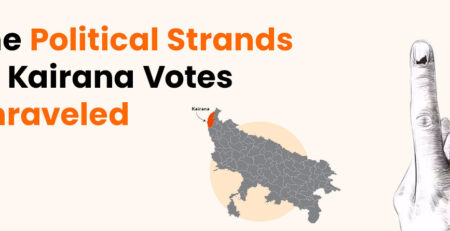No More OTPs for Aadhaar Verification: UIDAI Introduces Revolutionary QR Code & PDF Based KYC System in 2025
The Unique Identification Authority of India (UIDAI) has announced a groundbreaking change in the Aadhaar-based KYC (Know Your Customer) process that will revolutionize digital identity verification across India. The new system eliminates the need for OTPs, biometrics, and even sharing your Aadhaar number, making the verification process more secure, private, and user-friendly than ever before.
What is the New UIDAI No OTP KYC System?
UIDAI is revamping offline Aadhaar KYC to boost adoption, where users will not need to share Aadhaar number or use OTPs, making the entire process more secure and accessible. This revolutionary system introduces two primary methods for identity verification:
1. QR Code-Based Verification
Aadhaar QR code is a Quick Response code digitally signed by UIDAI and used for offline verification of identity. The QR code contains essential information including the last 4 digits of your Aadhaar number, name, address, gender, and date of birth, all encrypted and digitally signed for security.
2. PDF-Based Offline KYC
The new system allows users to generate secure PDF files containing their KYC information without exposing sensitive personal data or requiring real-time authentication through OTPs or biometrics.
Key Features of UIDAI’s New No OTP KYC System
Enhanced Privacy Protection
The most significant advantage of this new system is enhanced privacy. Unlike traditional KYC processes that require sharing your complete 12-digit Aadhaar number, the new system operates without exposing your full Aadhaar number, providing an additional layer of privacy protection.
No Biometric Requirements
The need for biometrics or OTPs is soon expected to be eliminated, thus starting the use of QR codes and PDF files for offline verification. This eliminates the inconvenience of biometric authentication failures and makes the process accessible to individuals with biometric issues.
Offline Functionality
The system works entirely offline, meaning you don’t need an internet connection during the verification process. This is particularly beneficial in areas with poor connectivity and reduces dependency on real-time server authentication.
Consent-Based Verification
You won’t need to bother with biometrics or OTPs anymore, just your consent, making the process truly user-controlled and transparent.
How Does the QR Code KYC Process Work?
Step 1: QR Code Generation
The QR code is present on all forms of Aadhaar like e-Aadhaar, Aadhaar letter, Aadhaar PVC card and mAadhaar. Users can access their QR code through:
- Printed Aadhaar card
- e-Aadhaar downloaded from UIDAI website
- mAadhaar mobile application
- Aadhaar PVC card
Step 2: QR Code Scanning
Service providers use UIDAI-approved QR code readers to scan the code and instantly access your verified identity information without requiring you to share personal details or undergo biometric verification.
Step 3: Instant Verification
The digitally signed QR code provides instant verification of your identity, completing the KYC process within seconds while maintaining the highest security standards.
Benefits of PDF-Based Aadhaar Verification
Secure Document Sharing
The PDF-based system allows users to generate secure, password-protected documents containing their KYC information. These documents can be shared with service providers without exposing sensitive personal data.
XML File Integration
Service providers extract the XML file using the password (share code) provided by the Aadhaar number holder, ensuring that only authorized parties can access your information with your explicit consent.
Enhanced Document Management
The PDF format makes document handling easier for both users and service providers, streamlining the entire KYC process while maintaining security protocols.
Impact on Financial Services and Fintech Companies
Reduced Compliance Burden
The new system significantly reduces the compliance burden on financial institutions and fintech companies by simplifying the KYC process while maintaining regulatory compliance standards.
Improved Customer Experience
Customers no longer need to wait for OTPs, worry about biometric authentication failures, or share sensitive Aadhaar numbers, resulting in a smoother, faster onboarding experience.
Cost-Effective Implementation
Financial institutions can reduce operational costs associated with real-time authentication services, biometric devices, and OTP delivery systems.
Security Enhancements in the New System
Digital Signature Verification
All QR codes and PDF documents are digitally signed by UIDAI, ensuring authenticity and preventing forgery or tampering.
Encrypted Data Transmission
Information shared through QR codes and PDFs is encrypted, protecting user data during transmission and storage.
Minimal Data Exposure
The system shares only necessary information for verification purposes, following the principle of data minimization and privacy by design.
Implementation Timeline and Rollout
Current Status
Recent reports indicate that UIDAI is actively implementing these changes, with the system expected to be fully operational across various sectors in the coming months.
Phased Deployment
UIDAI is implementing the new system in phases, starting with select service providers and gradually expanding to cover all sectors requiring KYC verification.
Industry Adoption
Financial institutions, telecom companies, and other regulated entities are expected to adopt the new system to provide better customer service while maintaining compliance with regulatory requirements.
Advantages for Different Stakeholders
For Individual Users
- No need to remember or share 12-digit Aadhaar numbers
- Elimination of OTP dependencies and associated delays
- No biometric authentication requirements
- Enhanced privacy and data protection
- Faster verification process
For Service Providers
- Simplified KYC implementation
- Reduced infrastructure requirements
- Lower operational costs
- Improved customer satisfaction
- Streamlined compliance processes
For Government and Regulators
- Enhanced security and privacy protection
- Better tracking and monitoring capabilities
- Reduced fraud and identity theft risks
- Improved digital inclusion
- Strengthened data protection framework
Technical Requirements and Compatibility
QR Code Reader Requirements
Service providers need UIDAI-approved QR code readers that can verify digital signatures and decrypt the information securely.
PDF Processing Capabilities
Organizations must implement systems capable of processing password-protected PDF files and extracting XML data securely.
Integration Considerations
The new system is designed to integrate seamlessly with existing KYC processes, minimizing disruption during the transition period.
Future Implications and Expansion
Digital Identity Evolution
This change represents a significant step toward a more mature digital identity ecosystem in India, setting the stage for further innovations in identity verification.
Global Influence
India’s approach to privacy-preserving digital identity verification may influence similar systems worldwide, positioning the country as a leader in digital identity innovation.
Sectoral Expansion
The success of this system in financial services may lead to its adoption in healthcare, education, government services, and other sectors requiring identity verification.
Common Questions and Concerns
Transition Period
During the transition, both old and new systems will operate simultaneously, ensuring no disruption to existing services while allowing gradual adoption of the new methods.
Backward Compatibility
The new system maintains backward compatibility with existing KYC processes, allowing organizations to implement changes at their own pace.
Training and Support
UIDAI is providing comprehensive training and support to service providers to ensure smooth implementation of the new system.
Best Practices for Implementation
For Organizations
- Invest in UIDAI-approved verification systems
- Train staff on new processes and procedures
- Implement robust data security measures
- Ensure compliance with privacy regulations
- Communicate changes clearly to customers
For Users
- Keep your Aadhaar documents updated and secure
- Understand your rights regarding data sharing
- Be aware of the new verification options available
- Report any suspicious activities or concerns to UIDAI
Conclusion
UIDAI’s introduction of QR code and PDF-based KYC verification without OTPs represents a revolutionary advancement in digital identity verification. This system addresses long-standing concerns about privacy, convenience, and security while maintaining the integrity of the identification process.
The elimination of OTP requirements, biometric authentication, and the need to share complete Aadhaar numbers makes this system more accessible, secure, and user-friendly. As organizations across various sectors adopt this new approach, users can expect faster, more convenient KYC processes while enjoying enhanced privacy protection.
This development positions India at the forefront of digital identity innovation, demonstrating how technology can be leveraged to create more inclusive, secure, and efficient identification systems. The success of this initiative will likely influence similar developments globally, reinforcing India’s leadership in digital governance and identity management.
The new UIDAI no OTP KYC system represents more than just a technological upgrade – it’s a fundamental shift toward user-centric, privacy-preserving digital identity verification that will benefit millions of Indians while setting new standards for digital identity systems worldwide.












